
Vector Laboratories is closed for the President’s Day on Monday, February 19th. We will be back in the office on Tuesday, February 20th.
We will respond to emails upon our return. Have a wonderful day.
Menu
Vector Laboratories is closed for the President’s Day on Monday, February 19th. We will be back in the office on Tuesday, February 20th.
We will respond to emails upon our return. Have a wonderful day.
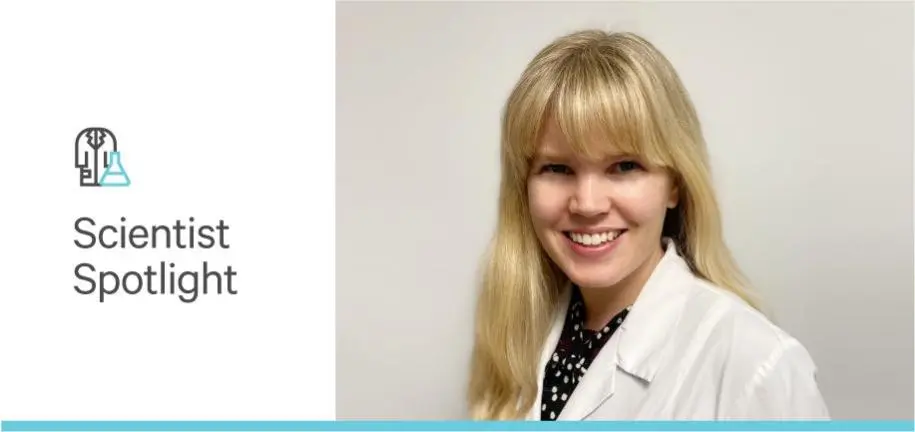
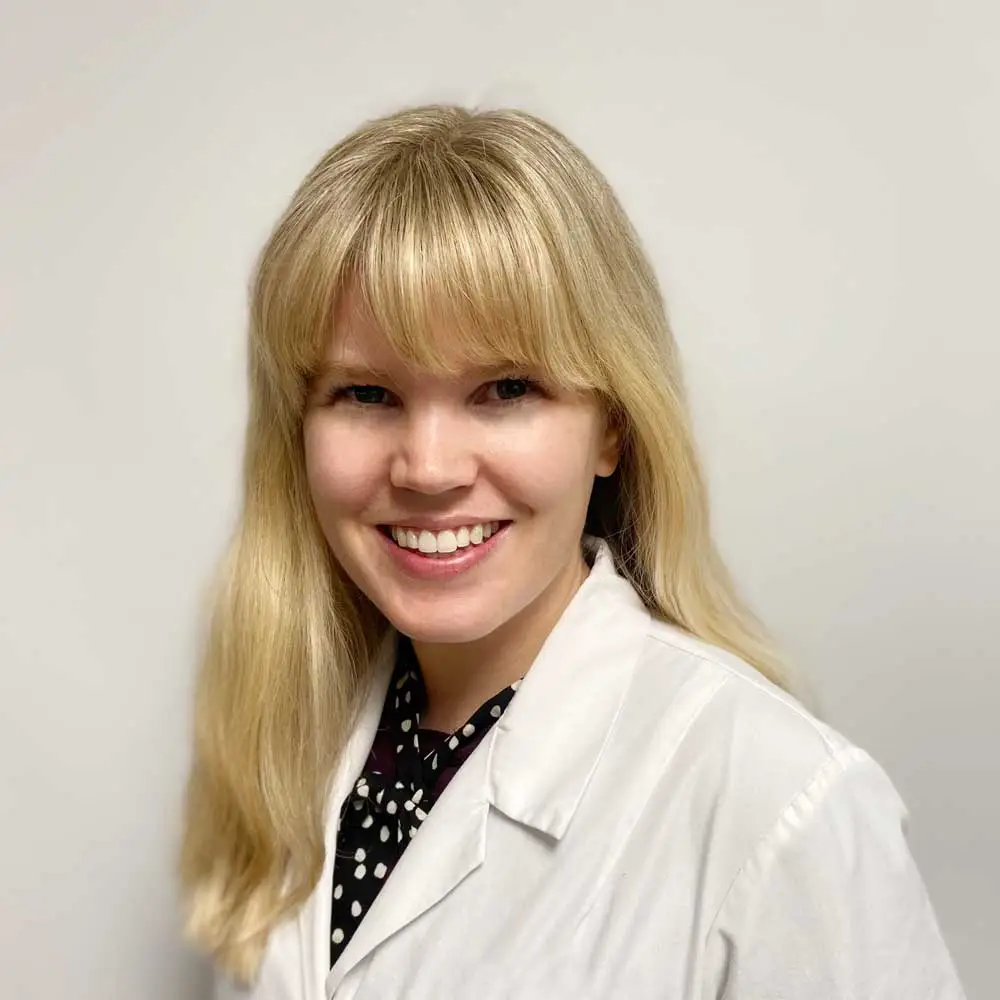
There are three Engevik sisters—Amy, Kristen, and Mindy—all in various stages of their academic careers studying topics within the field of gastrointestinal research. We shared our profile of the youngest first (see Kristen’s Scientist Spotlight), and now, we move on to her older sister Amy. Their parents, who were an emergency room doctor and a pediatric nurse, encouraged their children to do things other than watching television, like spending time outside to explore and foster an interest in the natural sciences. As adults, the siblings and their parents choose destination vacations to explore the world together, from scaling the tallest African peak of Mount Kilimanjaro (Tanzania) to visiting the Machu Picchu citadel nestled atop the Andes Mountains (Peru). Most recently, they learned how to navigate traveling restrictions during a pandemic during a trip to Portugal. Today, Amy is navigating her academic path as an early, independent researcher.
Amy earned her BS in Biology at Biola University (La Miranda, California), ultimately went on to study gastric ulcer repair during her PhD studies at the University of Cincinnati (Cincinnati, Ohio), and spent her postdoctoral years focusing on gastrointestinal epithelial cell biology and physiology at Vanderbilt University Medical Center (Nashville, Tennessee). Without a timeline, it may seem that Amy followed a straight path toward a science career in academia, but after her undergraduate degree, she spent several years exploring the best pathway forward. This included a few jobs followed by a stint in law school for a career in patent law before veering off with some soul-searching, backpacking adventures that helped her decide that graduate school in the sciences would fit her better. A year ago, Amy began her adventure as an Assistant Professor at the Medical University of South Carolina (MUSC; Charleston, South Carolina), building out and growing her lab to support her investigations into gastrointestinal and liver epithelial cell biology and physiology.
“After college, I took a year off to work and try to figure out what I wanted to do. I taught outdoor science with the Orange County (CA) department of education and worked at Costco. I then went to law school, thinking that I wanted to do patent law, but decided I really didn’t want to be a lawyer. I quit law school and backpacked through Australia and New Zealand before deciding to pursue a PhD in 2010. It was a bit of a circuitous route to get where I am. I just finished my first year as an Assistant Professor with my own lab, a research scientist career development award (K01), a lab technician, and a grad student on rotation. I’m on track to publish the results of my research at MUSC soon to use when I apply for my first research project grant (R01). I don’t think anyone quite prepares you to be an Assistant Professor, so there’s a lot of learning as you go.”
When away from the lab bench, Amy spends time envisioning experiments before putting them into play in mouse models or organoids that she prepares for tissue staining to visualize perturbations in protein function. While some essential equipment and consumable orders (tissue processor, refrigerator/freezer, cell culture matrix) were delayed during the early setup of her lab because of supply chain issues, her lab space is operational, including a cell culture room and a small break room, and is staffed by an enthusiastic research technician and a grad student on rotation.
“I study the gastrointestinal tract and focus specifically on the Myosin Vb protein. Many mutations in its gene inactivate the protein and cause severe, unremitting diarrhea in children. While the disease is rare, it’s incredibly devastating and has a high mortality rate. These kids require IV fluids (total parenteral nutrition) to survive, and intestinal transplantation if they do. I’m interested in looking at the mechanisms of Myosin Vb trafficking to try to create novel treatment strategies for these patients.”
Her research delves into the role that mutations in the Myosin 5B (MYO5B) gene have on the expressed molecular motor Myosin Vb protein and its function. Typically, Myosin Vb is responsible for delivery of proteins to the apical membrane of epithelial cells, and when its function is disrupted, it results in gastrointestinal disorders. In humans, one of these is microvillus inclusion disease, a serious congenital diarrhea disorder that reduces the ability of the intestine to absorb nutrients and fluids, resulting in malnutrition and dehydration. Mutations in the gene have more recently been implicated in cancers (colorectal and gastric), inflammatory bowel disease (IBD), and impairment of bile formation or flow (liver cholestasis).
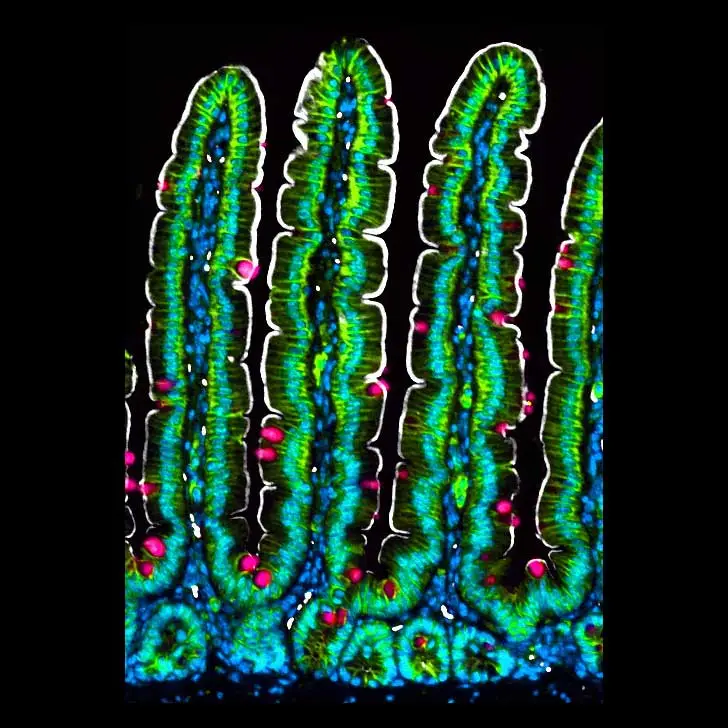
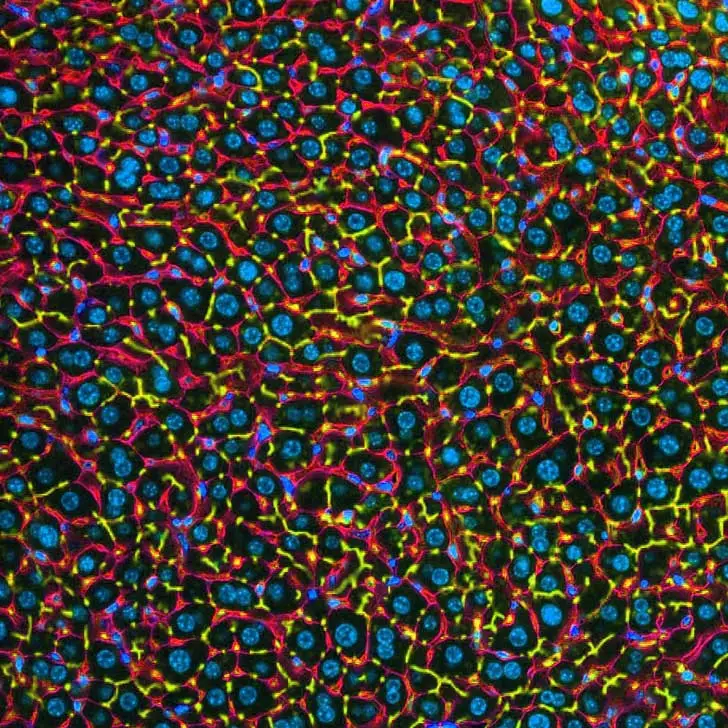
“As a PhD student, I sought out a mentor who cared about me as a student and a scientist. Because I didn’t have much research experience, I also needed someone who was very hands-on. I also had a phenomenal mentor for my postdoc. You want a mentor who will say your name in a room full of important people. And he got me to the place where I am by telling people that he thought I was a good scientist, that I was smart, that I was hard-working and very capable. It is important to impart some of your skillset, your integrity, and your leadership ability to keep the science moving forward. And, to me, it’s fun to see the people that you’re training do well.”
While it helps to have an older sister and a younger sister in the same field of research with slightly different perspectives to mentor, support, and bounce ideas off each other to drive their research forward, Amy credits her mentors with helping her develop as a scientist. Ironically, it was her “gut feeling” that was the deciding factor for the best fit for an advisor during her PhD lab rotations. She wanted a mentor who cared about her as a student and, because she entered the program with only limited research experience, needed someone who could direct her with experience and help her develop a thick skin to manage criticism. The mentor she chose not only was clearly enthusiastic about her own science but also willing to groom her grad students with projects that have great potential to set them up for success. Amy sees these characteristics as a way to invest in the next generation of scientists. As for this generation of Engevik sister scientists, their synergy is as mesmerizing as the imagery they capture.
“I love being able to visualize science. I keep framed copies of my cover images of a few science journals (Journal of Cell Biology, Gastroenterology, and Canadian Journal: Physiology and Pharmacology) hanging in my workspace, along with the canvas of the image that I submitted to the Vector Labs photo contest. I love staining and being able to see where the proteins are in the cells. I LOVE microscopy—the liver and GI tract images are stunning—it’s so satisfying, after doing all the work, to see the images that tell the backstory of my research.”
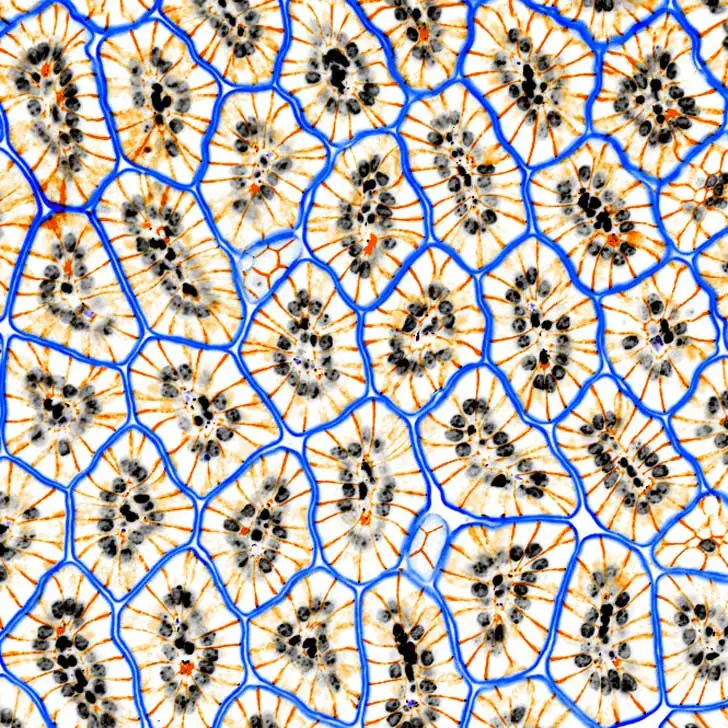
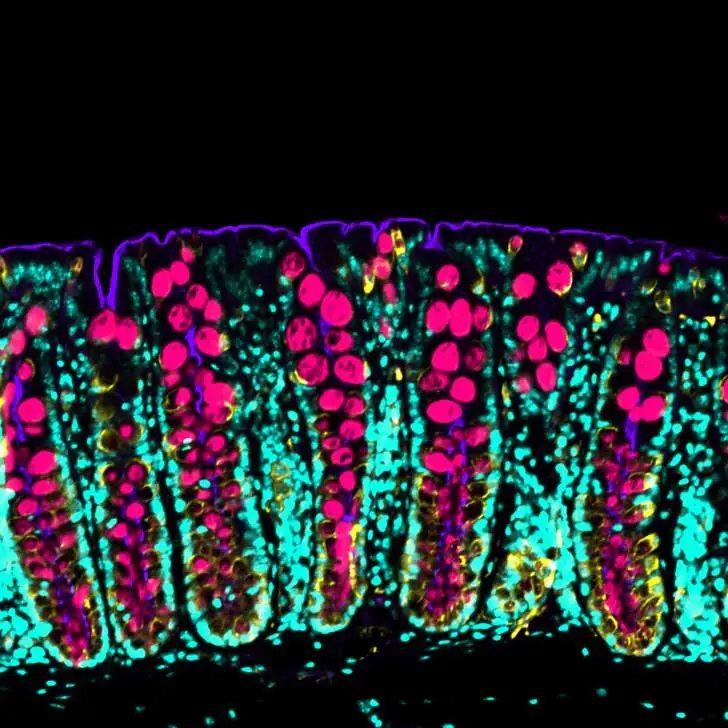





Stay in the Loop. Join Our Online Community
Together we breakthroughTM

©Vector Laboratories, Inc. 2024 All Rights Reserved.